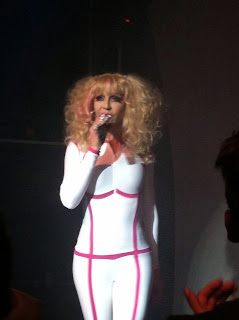This picture of a fashion show represents society's demand for specific taste demands to be met, such as fashion and entertainment. Fashion plays a major part in popular culture, and new clothing styles are always in demand.
New York City is the capitol of American consumerism, and the heart of its pop culture. The constantly changing billboards in Time Square allow pop culture to thrive in the massive city, and it is always up with the times and the current news, demands and trends.
Disney is a major part of American pop culture, and not even just for kids. Disney is so big that there are two giant theme parks built in its honor, and the company continues to go strong, years after Walt Disney's actual death.
The movie Say Anything was very popular when it came out in the 1980s, and today it has become a symbol of '80s pop culture. During the 1980's, many movies were made about coming of age, and because there seemed to be a demand in the viewer population, they were successful and became an integral part of the pop culture of the time.
The emotional energy a person gets when taking part in social gatherings or activities is known as "collective effervescence", and is one of the major benefits of group membership. This can happen at places like concerts, sports games, etc.
Clubbing is a part of America's pop culture, particularly among young adults. It is more present in urban areas than rural areas, but young adults always seem to have a need to party and let loose. This is an example where society saw a need or demand and provided the means for its fulfillment.




















.jpg)




.jpg)








